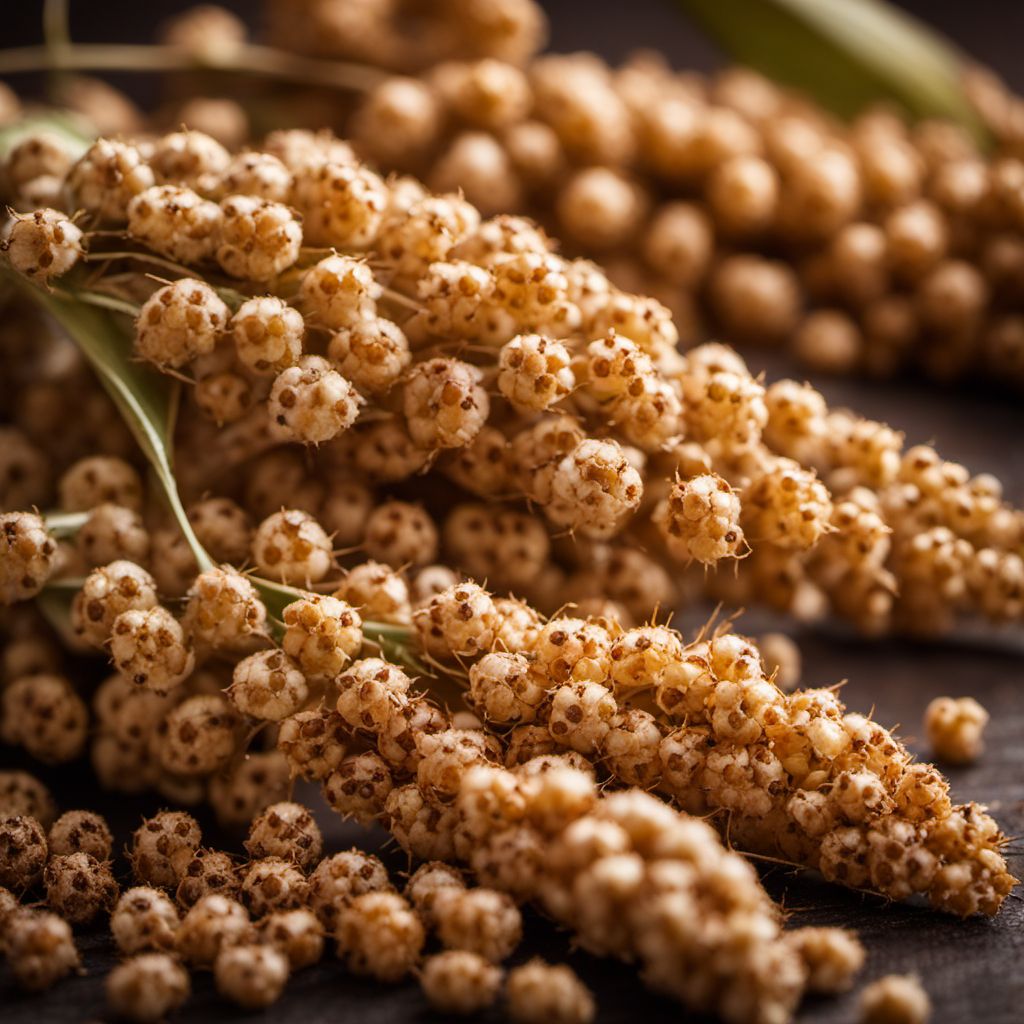
Ingredient
Sorghum and similar-
The Ancient Grain: Sorghum and Similar
Sorghum, millet, and teff are gluten-free grains that share similar characteristics. They have a mild, nutty flavor and a slightly chewy texture. Sorghum is larger and has a more pronounced flavor, while millet and teff are smaller and have a milder taste. These grains can be cooked and used in a variety of dishes, from porridges and salads to baked goods and side dishes.
Origins and history
Sorghum, millet, and teff have a rich history that dates back thousands of years. Sorghum is believed to have originated in Africa and has been a staple crop in many African countries. Millet has been cultivated in Asia for over 7,000 years and is a dietary staple in India, China, and other Asian countries. Teff is native to Ethiopia and has been a key ingredient in Ethiopian cuisine for centuries.
Nutritional information
Sorghum, millet, and teff are rich in fiber, protein, and various vitamins and minerals. They are also gluten-free, making them suitable for individuals with gluten sensitivities or celiac disease. These grains are lower in calories compared to wheat and rice, making them a nutritious choice for those watching their calorie intake.
Allergens
Sorghum, millet, and teff are naturally gluten-free grains and do not contain any known allergens. However, cross-contamination may occur during processing or packaging, so it is important to choose certified gluten-free products if you have gluten sensitivities or celiac disease.
How to select
When selecting sorghum, millet, or teff, look for whole grains that are free from moisture, mold, or insect damage. Opt for organic or certified gluten-free products if desired. Store the grains in a cool, dry place in airtight containers to maintain their freshness and prevent moisture absorption.
Storage recommendations
To keep sorghum, millet, and teff fresh, store them in airtight containers in a cool, dry place away from direct sunlight. Proper storage will help prevent moisture absorption and keep the grains from becoming stale. If stored correctly, these grains can have a shelf life of up to a year.
How to produce
Sorghum, millet, and teff can be grown by amateur gardeners in suitable climates. They require well-drained soil, ample sunlight, and regular watering. However, it is important to note that these grains may have specific cultivation requirements, so it is advisable to research and follow expert guidelines for successful cultivation.
Preparation tips
Sorghum, millet, and teff can be cooked and used in a variety of dishes. They can be boiled and used as a base for salads, added to soups and stews for added texture, or ground into flour for baking. Sorghum flour can be used as a gluten-free alternative in bread, pancakes, and other baked goods. Millet and teff can be cooked and enjoyed as a side dish or used in porridges and pilafs.
Substitutions
Quinoa, amaranth, and buckwheat are suitable substitutes for sorghum, millet, and teff. These grains offer similar nutritional profiles and can be used interchangeably in recipes. However, keep in mind that each grain has its own unique flavor and texture, so the substitution may slightly alter the taste and texture of the dish.
Culinary uses
Sorghum, millet, and teff are versatile grains that can be used in a wide range of culinary applications. They are commonly used in porridges, pilafs, salads, and baked goods. These grains are particularly popular in African, Asian, and gluten-free cuisines. Explore different recipes and cuisines to discover the full potential of sorghum, millet, and teff.
Availability
Sorghum is commonly cultivated in Africa, the United States, and India. Millet is widely grown in Africa, Asia, and parts of Europe. Teff is primarily cultivated in Ethiopia and other East African countries. These grains are also available in specialty stores and online retailers worldwide.


